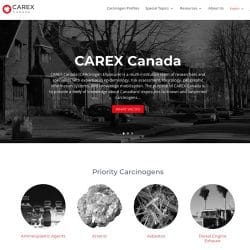Prostate cancer risk decreases following cessation of night shift work
Read more »
Subscribe to our newsletters
The CAREX Canada team offers two regular newsletters: the biannual e-Bulletin summarizing information on upcoming webinars, new publications, and updates to estimates and tools; and the monthly Carcinogens in the News, a digest of media articles, government reports, and academic literature related to the carcinogens we’ve classified as important for surveillance in Canada. Sign up for one or both of these newsletters below.
CAREX Canada
Faculty of Health Sciences
Simon Fraser University
Harbour Centre Campus
2602 – 515 West Hastings St
Vancouver, BC V6B 5K3
CANADA
© 2019 CAREX Canada










